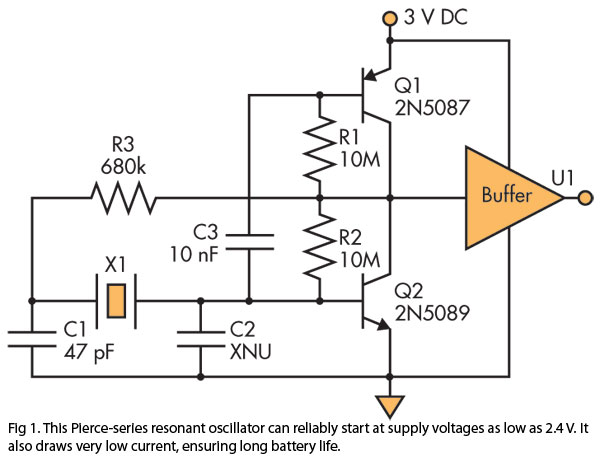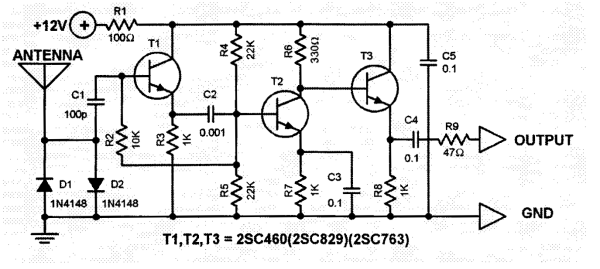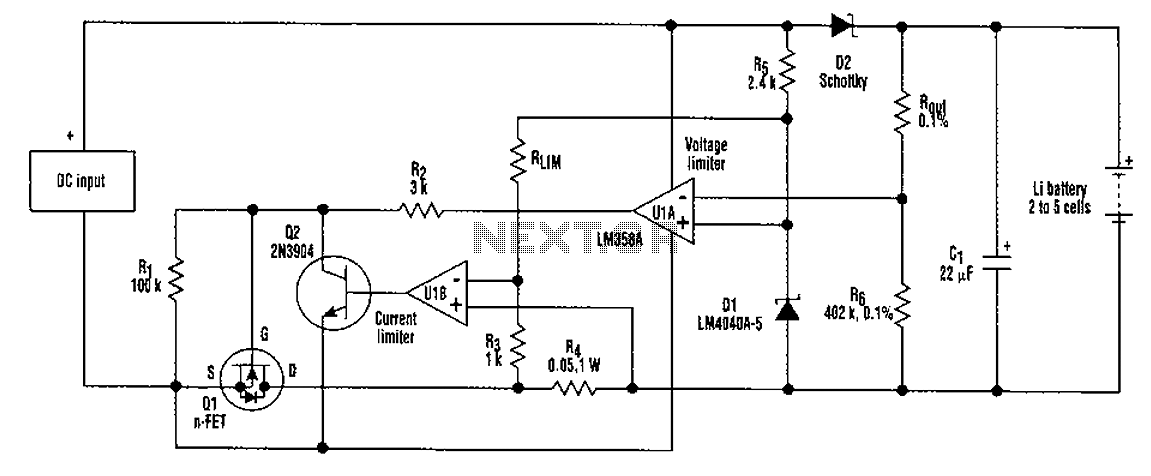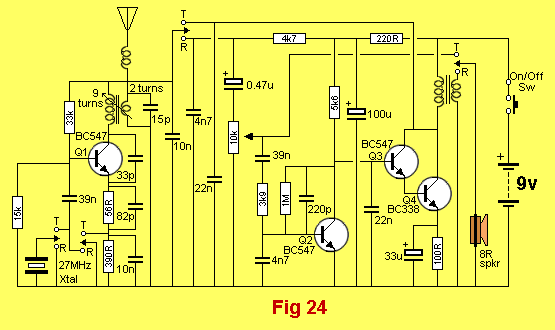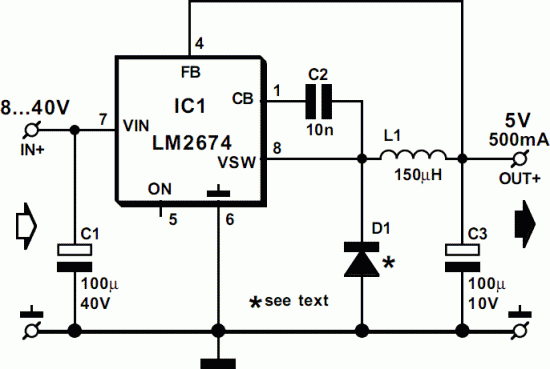
Solar Cell Voltage Regulator circuit

This device is designed to be a simple, inexpensive comparator intended for use in a solar cell power supply setup where a quick indication of "too low" or "just right" voltage is needed. The circuit consists of one 5V regulator, two transistors, two LEDs, five resistors, two capacitors, and one small battery. Although a 4V battery is indicated, 4.5V (three alkaline batteries in series) or 3.6V (three NiCd cells in series) will also work.
The described comparator circuit serves as a voltage monitoring tool in solar power applications. The primary function is to provide visual feedback regarding the voltage level of the power supply, ensuring that the output voltage remains within acceptable limits.
The circuit architecture includes a 5V voltage regulator that stabilizes the output voltage for the transistors, ensuring consistent operation. The two transistors are configured as switches, which control the operation of the two LEDs based on the input voltage level. When the voltage falls below a predetermined threshold, one of the LEDs will illuminate, signaling that the voltage is "too low." Conversely, when the voltage is within the acceptable range, the second LED will light up, indicating that the voltage is "just right."
The five resistors in the circuit play crucial roles in setting the biasing conditions for the transistors and determining the voltage thresholds for the LED indicators. Resistors are also used to limit the current flowing through the LEDs, preventing damage and ensuring longevity. The two capacitors serve to filter any voltage spikes or noise in the power supply, contributing to the stability of the circuit's operation.
The choice of battery is flexible, allowing for various configurations depending on the user's needs. The circuit can effectively operate with a 4V battery, or alternatives such as 4.5V from three alkaline batteries or 3.6V from three NiCd cells, making it versatile for different solar power setups.
Overall, this simple comparator circuit is an efficient and cost-effective solution for monitoring voltage levels in solar cell power supply systems, providing clear visual indicators for users.This device is designed to be a simple, inexpensive ˜comparator, intended for use in a solar cell power supply setup where a quick ˜too low or ˜just right voltage indicator is needed. The circuit consists only of one 5V regulator, two transistors, two LEDs, five resistors, two capacitors, and one small battery.
Although a 4-V battery is indicated, 4.5 V (3 alkalines in series) or 3.6 V (3 NiCd cells in series) will also work.. 🔗 External reference
The described comparator circuit serves as a voltage monitoring tool in solar power applications. The primary function is to provide visual feedback regarding the voltage level of the power supply, ensuring that the output voltage remains within acceptable limits.
The circuit architecture includes a 5V voltage regulator that stabilizes the output voltage for the transistors, ensuring consistent operation. The two transistors are configured as switches, which control the operation of the two LEDs based on the input voltage level. When the voltage falls below a predetermined threshold, one of the LEDs will illuminate, signaling that the voltage is "too low." Conversely, when the voltage is within the acceptable range, the second LED will light up, indicating that the voltage is "just right."
The five resistors in the circuit play crucial roles in setting the biasing conditions for the transistors and determining the voltage thresholds for the LED indicators. Resistors are also used to limit the current flowing through the LEDs, preventing damage and ensuring longevity. The two capacitors serve to filter any voltage spikes or noise in the power supply, contributing to the stability of the circuit's operation.
The choice of battery is flexible, allowing for various configurations depending on the user's needs. The circuit can effectively operate with a 4V battery, or alternatives such as 4.5V from three alkaline batteries or 3.6V from three NiCd cells, making it versatile for different solar power setups.
Overall, this simple comparator circuit is an efficient and cost-effective solution for monitoring voltage levels in solar cell power supply systems, providing clear visual indicators for users.This device is designed to be a simple, inexpensive ˜comparator, intended for use in a solar cell power supply setup where a quick ˜too low or ˜just right voltage indicator is needed. The circuit consists only of one 5V regulator, two transistors, two LEDs, five resistors, two capacitors, and one small battery.
Although a 4-V battery is indicated, 4.5 V (3 alkalines in series) or 3.6 V (3 NiCd cells in series) will also work.. 🔗 External reference
